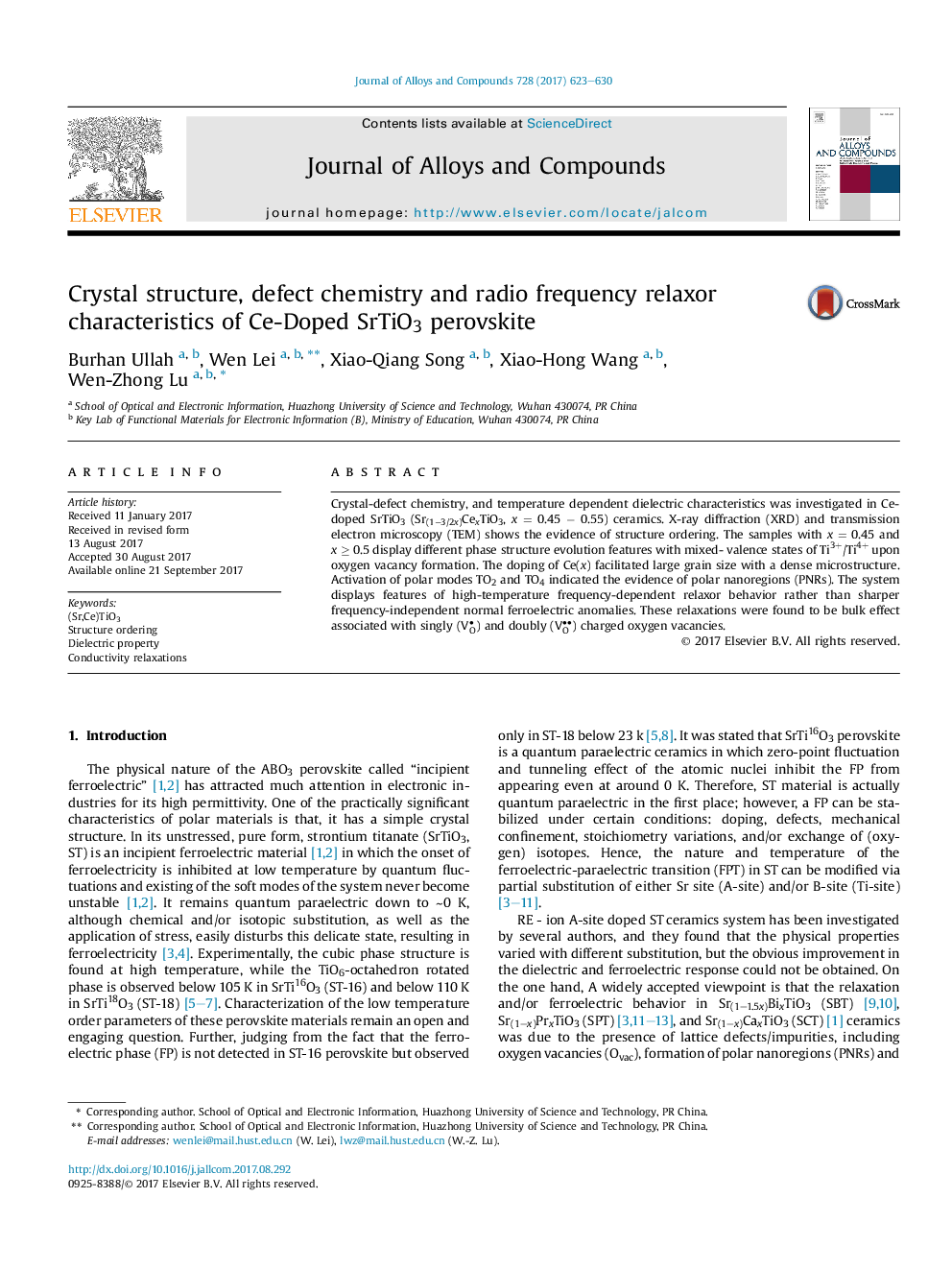| Article ID | Journal | Published Year | Pages | File Type |
|---|---|---|---|---|
| 5458180 | Journal of Alloys and Compounds | 2017 | 8 Pages |
â¢Sr(1-3x/2)CexTiO3 ceramics were prepared by using a conventional solid state method.â¢Evidence of structure ordering and mixed-valence state of Ti3+/4+ ions upon Ovac formation.â¢Evidence of the polar TO2 and TO4 modes and formation of polar nanoregions (PNRs).â¢High-temperature relaxor behavior rather than normal ferroelectric anomalies.â¢Existence of hysteresis loop and remnant polarization of â¼0.04 μC/cm2.
Crystal-defect chemistry, and temperature dependent dielectric characteristics was investigated in Ce-doped SrTiO3 (Sr(1â3/2x)CexTiO3, x = 0.45 â 0.55) ceramics. X-ray diffraction (XRD) and transmission electron microscopy (TEM) shows the evidence of structure ordering. The samples with x = 0.45 and x â¥Â 0.5 display different phase structure evolution features with mixed- valence states of Ti3+/Ti4+ upon oxygen vacancy formation. The doping of Ce(x) facilitated large grain size with a dense microstructure. Activation of polar modes TO2 and TO4 indicated the evidence of polar nanoregions (PNRs). The system displays features of high-temperature frequency-dependent relaxor behavior rather than sharper frequency-independent normal ferroelectric anomalies. These relaxations were found to be bulk effect associated with singly (VOâ¢) and doubly (VOâ¢â¢) charged oxygen vacancies.
